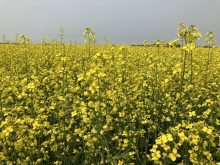Will Canadian farmers be heroes or villains when the history of the “Greenhouse Effect” is written? The next 12 years should determine the answer.
The predicted Greenhouse Effect (global warming) is attributed to more heat being trapped in the atmosphere as human activity causes more “greenhouse gases” to be released.
Last December, industrial countries, meeting in Kyoto, Japan, agreed to reduce their emissions of such gases to six percent below 1990 levels.
Now, officials in Canada and other nations are examining sources of greenhouse gases – and agriculture is one of the targets.
Read Also

Growth plates are instrumental in shaping a horse’s life
Young horse training plans and workloads must match their skeletal development. Failing to plan around growth plates can create lifelong physical problems.
The attention being given to agriculture is understandable when one considers the three major greenhouse gases:
Carbon dioxide: Released from the soil by tillage; also put in the atmosphere from motor vehicle emissions.
Methane: Emitted from ruminant animals and manure.
Nitrous oxide: Atmospheric levels increased by use of nitrogen fertilizer.
Add a few controversial agricultural activities like stubble-burning or occasional pollution from a large feedlot, and it might seem like a recipe for public-relations disaster. But that’s only part of the story.
The other side of the story, which needs to be impressed on policymakers and the urban public, is that agriculture can play a beneficial role in moderating the Greenhouse Effect.
As one letter writer notes in this issue, it’s important to consider that the nitrogen in fertilizer was extracted from the atmosphere in the first place. Also, growing plants take carbon dioxide from the air through photosynthesis and convert it to chlorophyll.
Improvements can be made. Soil conservation practices can reduce the rate of carbon loss, and as minimum-tillage technology spreads, more carbon is being retained in the soil.
The trend is so encouraging that a recent review by the environmental policy division of Saskatchewan Wheat Pool reported that Western Canada’s agricultural soils could be absorbing more carbon than they release in two years. They would, in environmentalist terminology, become a “carbon sink,” offsetting releases from other sources – including urban activities – and helping Canada meet its international commitment.
The review warned, however, that more work is needed to improve farming practices and reduce agricultural emissions of greenhouse gases.
That means a serious government effort in research, extension work, and providing incentives to ensure the desired practices are economic.














